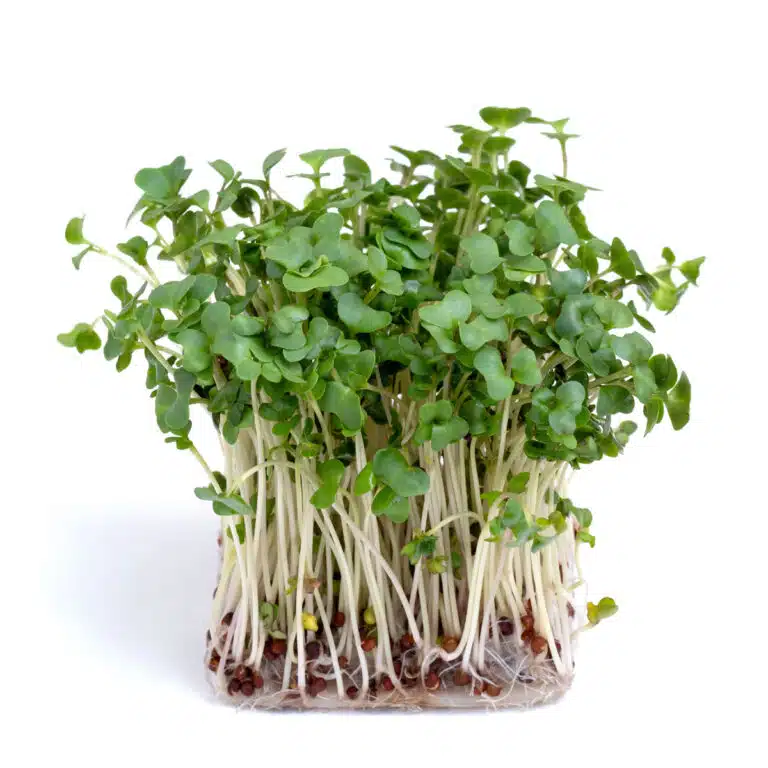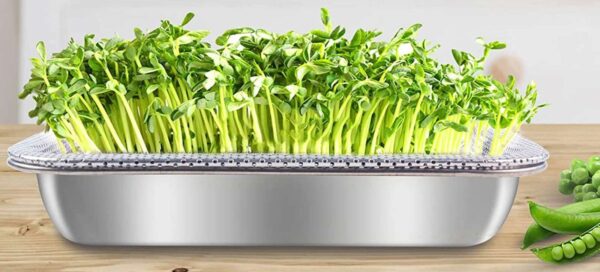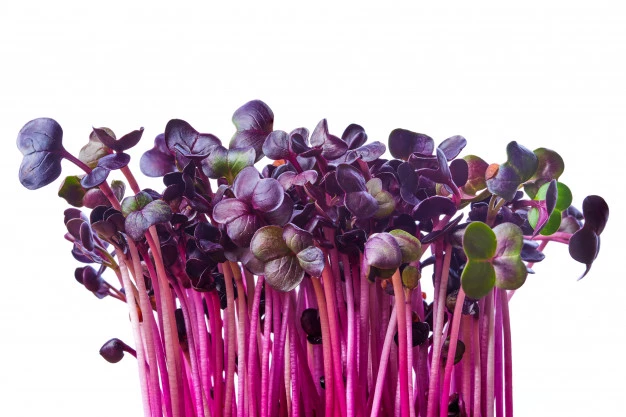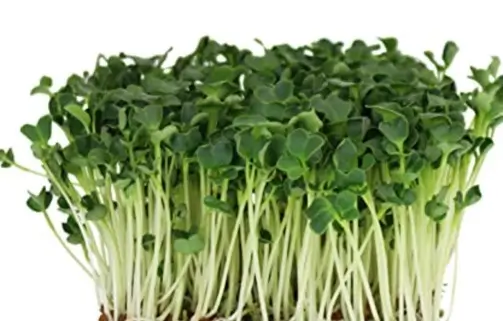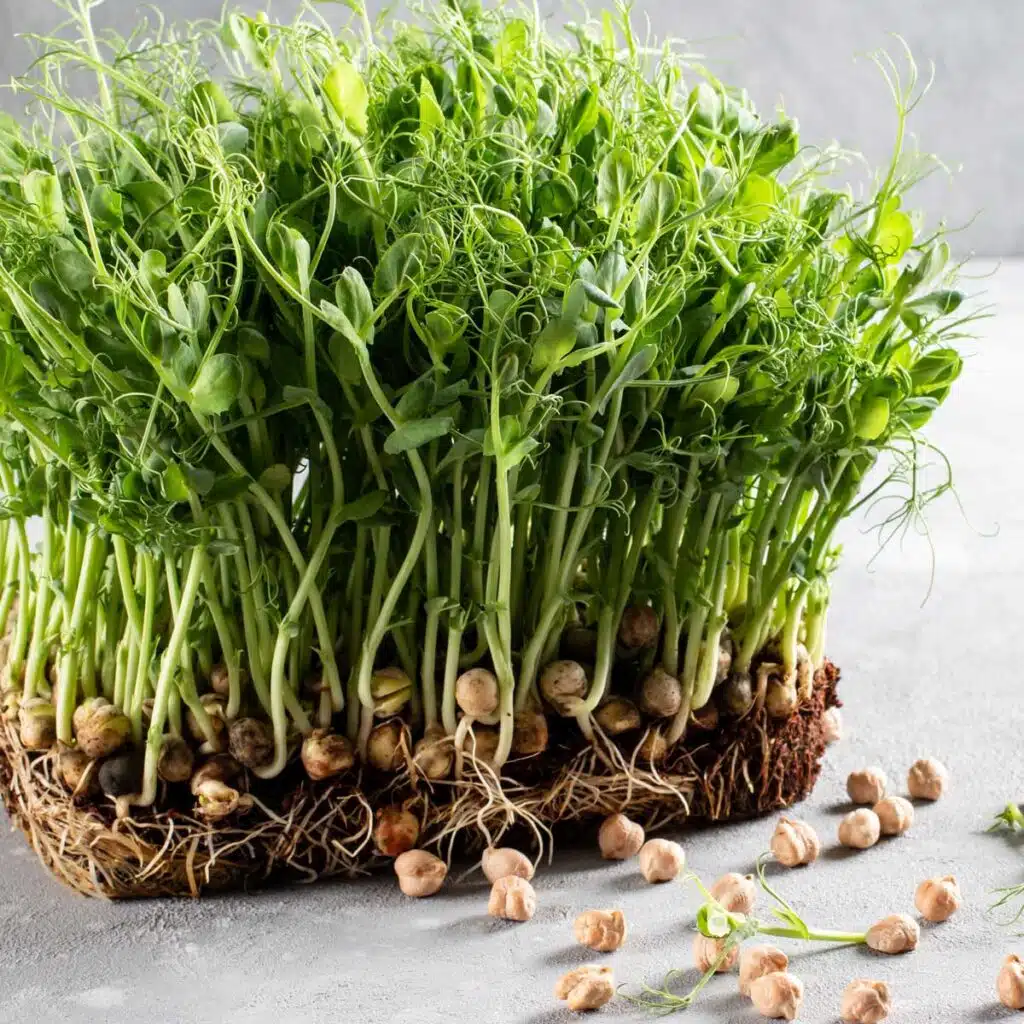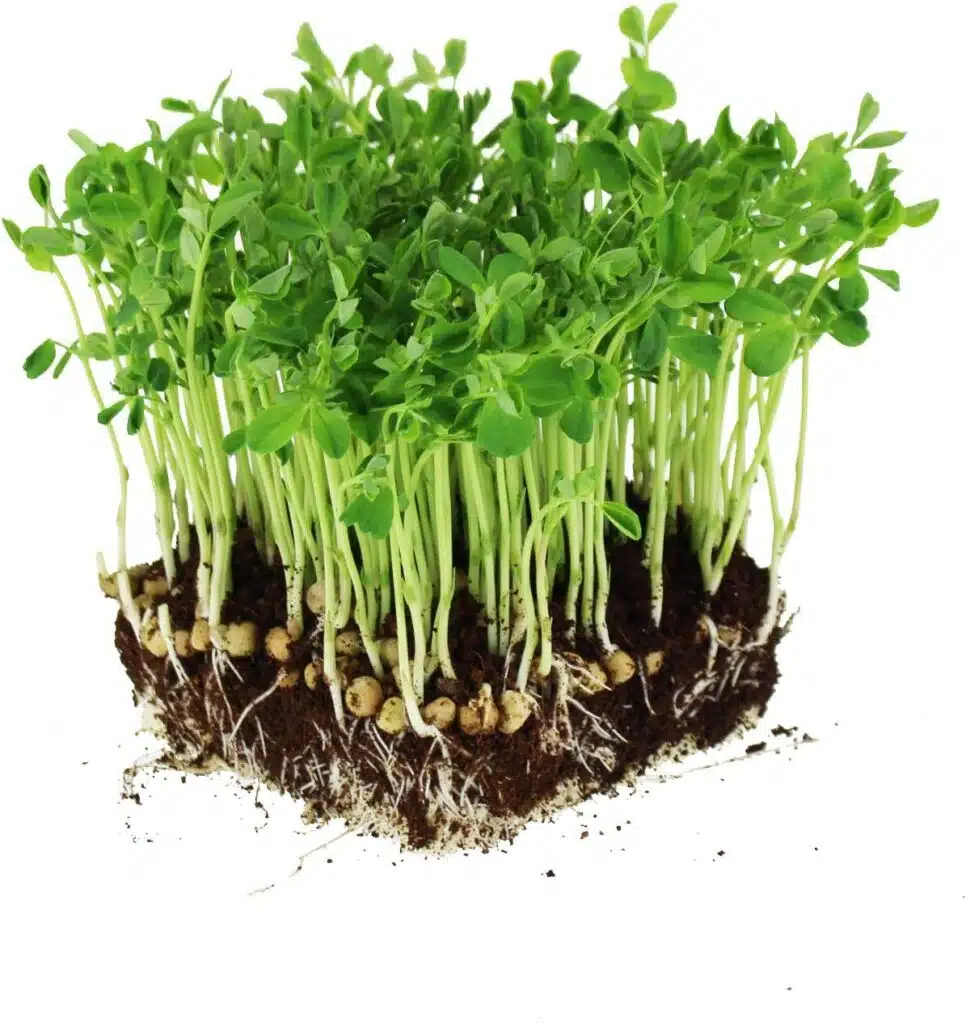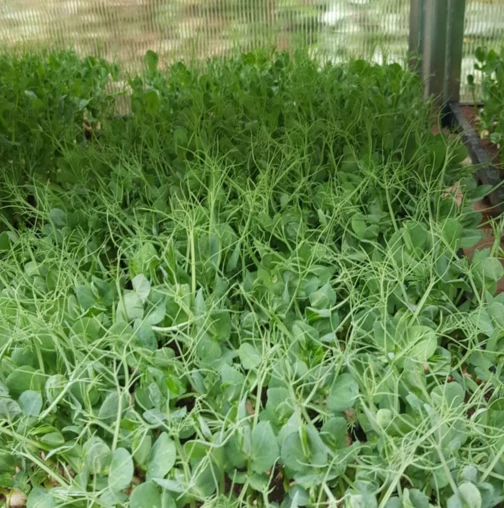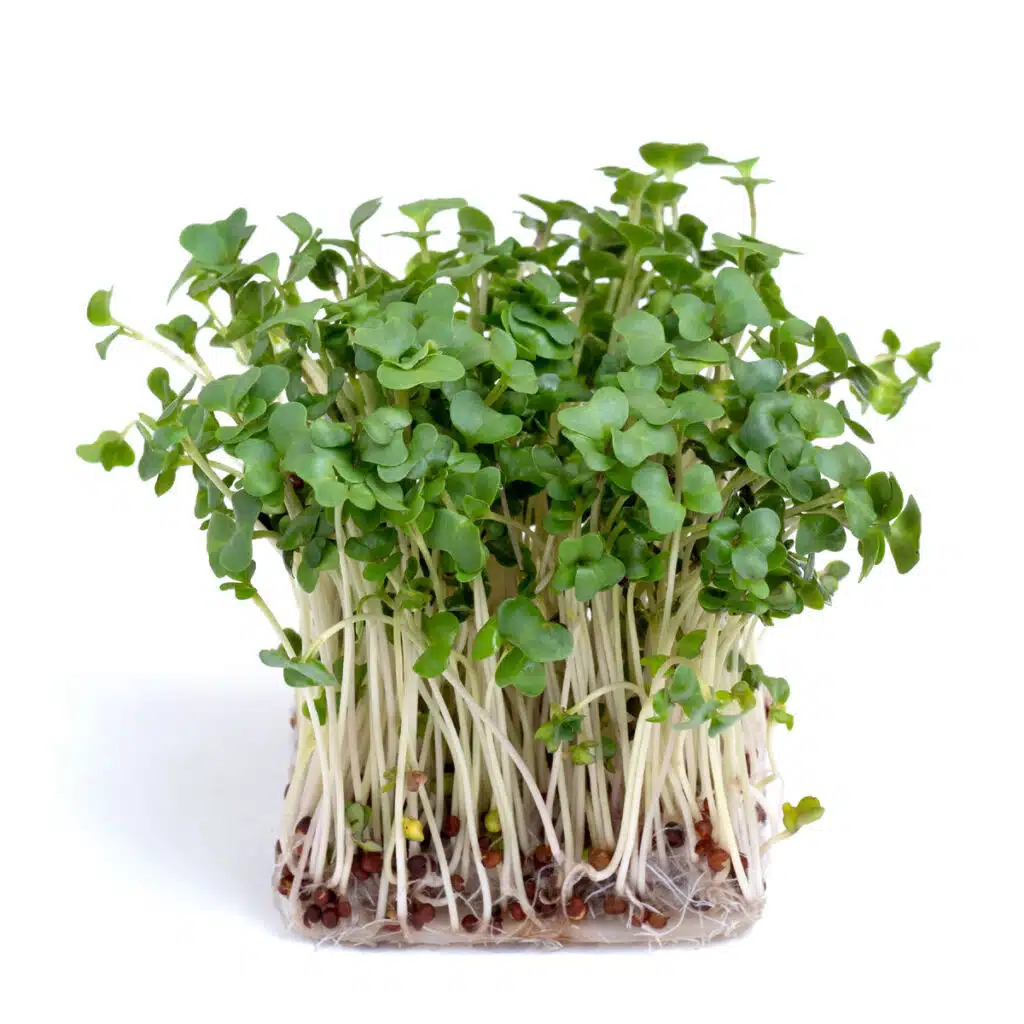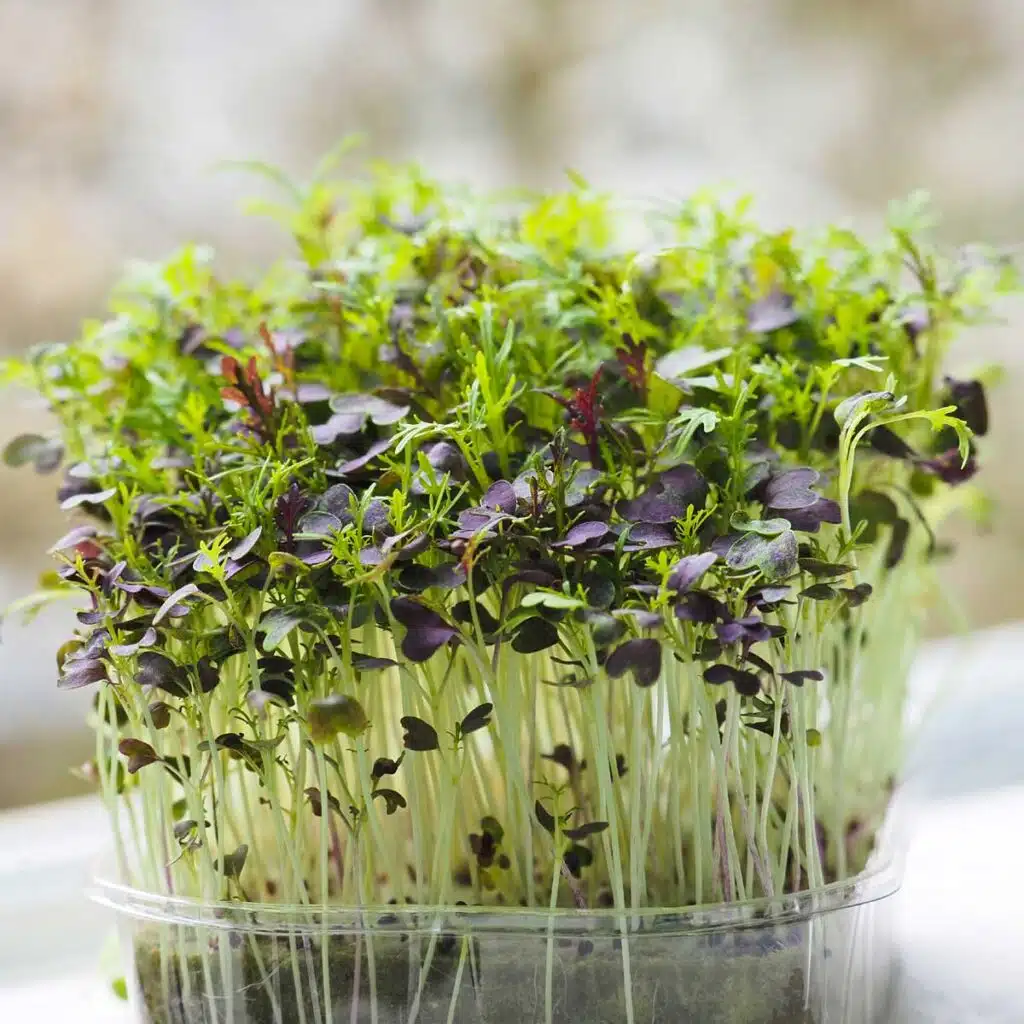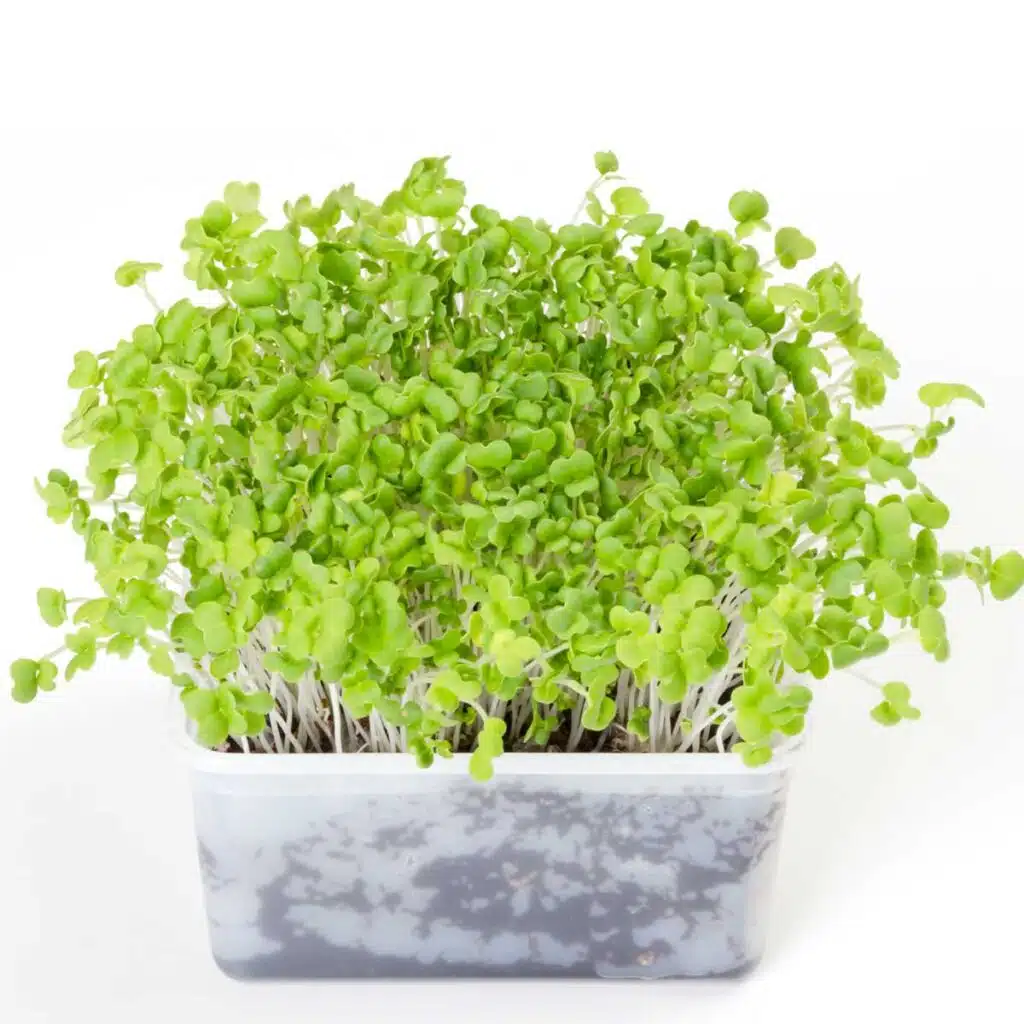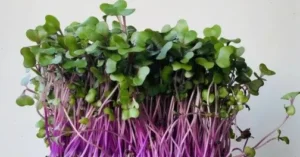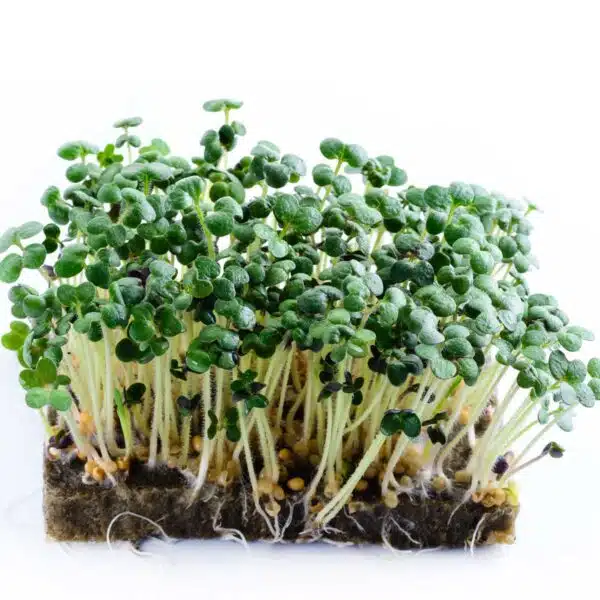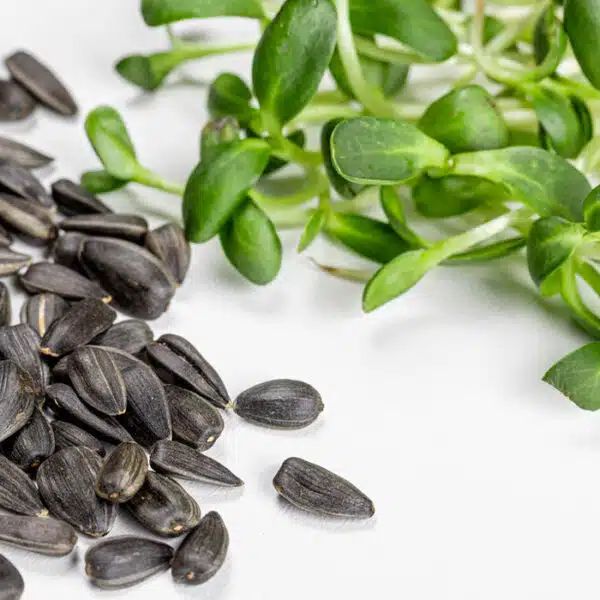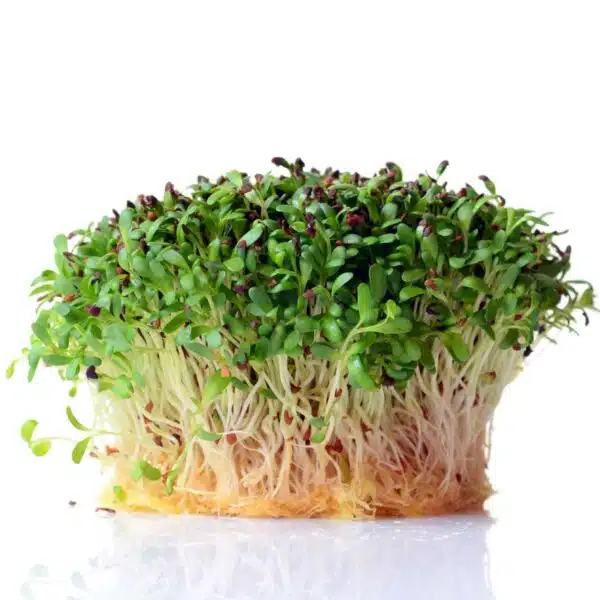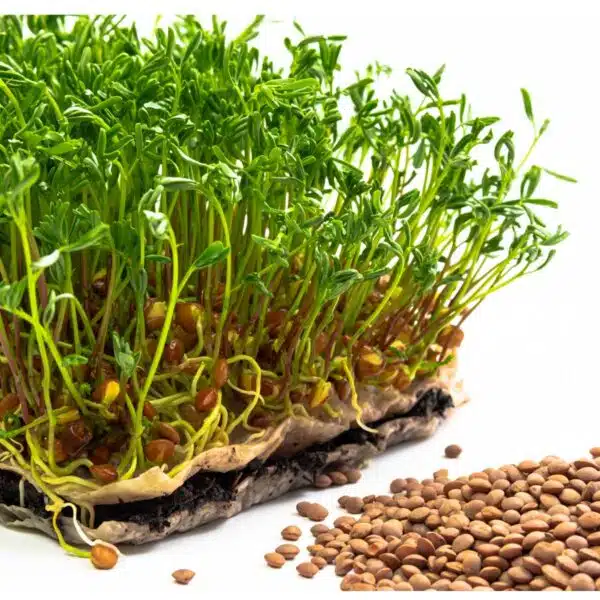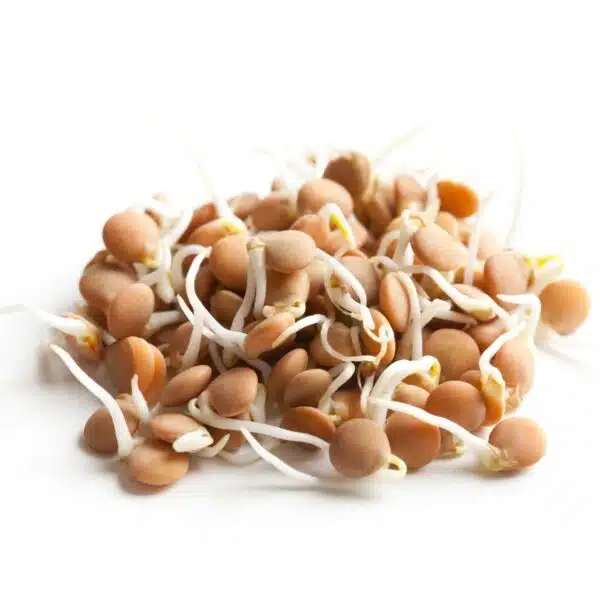Microgreens are a great way to add extra nutrients and flavour to your diet.
Its popularity has increased among professional chefs and those who grow vegetables at home.
They can be grown in all seasons and are simple to care for!
Over the years, we've enjoyed a wealth of different flavours, so we're excited to share our selection of the best microgreen seeds for indoor cultivation with you.
Whether you want a simple task or something that challenges your green thumb, we have something for everyone.
We will also guide you to where you can both physically and online buy microgreen seed in Denmark.
The best seeds are both easy to grow and produce. These include radishes, peas, broccoli, cabbage, kale, mustard and lettuce. They are not only easy to obtain, but also incredibly easy, requiring only a modest growing time of approximately 7-14 days from the first sprouts shows up for the final harvest.
Don't be fooled by these small and neat plants:
They are mini packs packed with flavour and nutrition, always ready to take your dishes to new heights.
Table of contents
ToggleWhat are microgreens?
It's an overlooked treasure compared to the health boost they provide.
These mini vegetables are superfoods in the truest sense – packed with everything our bodies require.
read more here What is microgreens and is it healthy
In fact, plants are harvested in the microgreen stage up to 40 times more nutritious than their fully grown varieties
This green product. Has become a global superfood trend - and for good reason.
Above all. It's surprisingly easy to start growing them.
In practice, microgreens are young vegetables and herbs that are harvested at a stage between sprouts and young greens.
They are usually harvested when the first set of true leaves appear, making them smaller than "baby vegetables".
Regular organic seeds. Specialised microgreen seeds or mixtures of different organic seeds can be used to grow microgreens that are rich in nutrients.
Why are microgreens so healthy?
You might be wondering why these plant shoots are considered so healthy that they've even gained superfood status?
It's a perfectly understandable question, but there's a perfectly natural explanation.
There is an attachment to this specific stage in the plant's life. All seeds are equipped with a "food packet" to survive the early days until they have leaves and roots to ensure their continued existence.
What we actually consume. Is this "packed lunch".
Micro greens is one of the healthiest things you can eat.
According to a Study from University or Marylandis e.g. Broccoli Calabrese in micro form up to 40 times healthier than the adult Broccoli plant.
Easier to grow than sprouts - same nutrition
Many confuse microgreens with sprouts, which often require repeated rinsing and care several times a day.
Microgreens are different as they are grown in a growing medium, such as coconut fibre or coconut soil. coconut fibre or coconut soil, and when the plants are ready. Harvest them by cutting them just above the roots.
>> Read about how you succeed in cultivation here
This method requires far less work and therefore makes it easier to integrate greenery into everyday life at home.
>Read more about it best soil for microgreens here
BEST MICROGREEN SEEDS
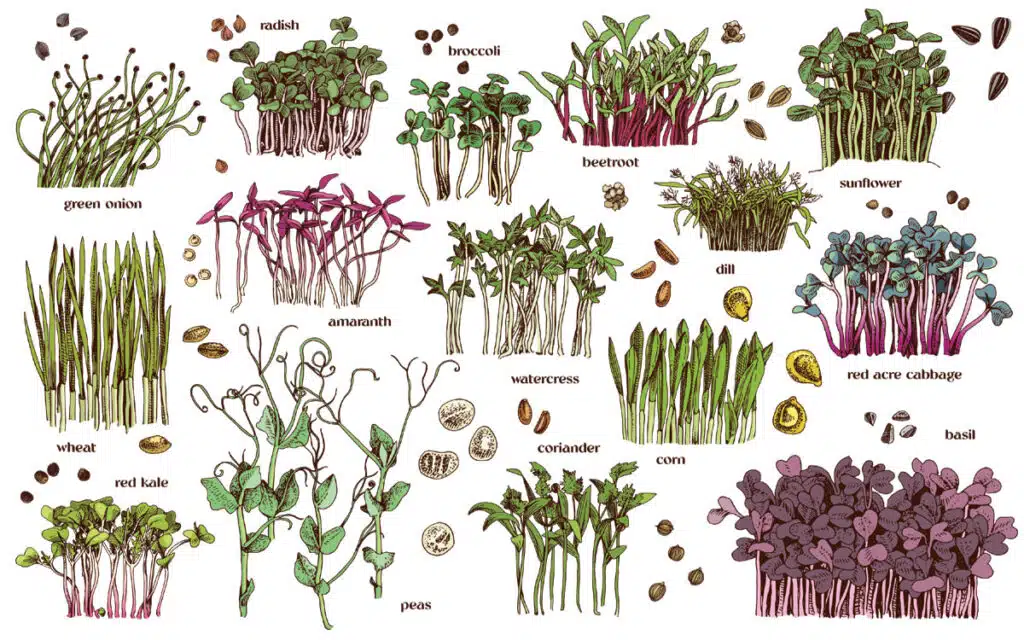
The 10 best seeds for microgreens
It's super easy to grow this healthy veg all year round. Indoors or outdoors. They have a high nutritional value and are great value for money, as you can grow a lot of microgreens from a few tablespoons of seeds.
All you need is a few simple things. Including organic micro green frog, a low micro green sprout hill with drainage holes, a growth medium (e.g coconut flour), Some water, grow light and some time.
Here are our recommendations for the best organic seeds and where to buy them.
Online (web shop):
Physical store:
1. Radish Microgreen seed
Organic radish seeds are great to use in salads or as a garnish for any dish.
They have an appealing crispy texture and their peppery flavour and red colour will add excitement to your food!
Radishes should be harvested when they are young with only the cotyledons visible. If you wait too long, it is likely that the radish will have developed a large root.
- Taste: Spicy, flavorful, peppery
- In softening: No
- Germination: 1-2 days
- Dark time: 3-4 days
- Ideal harvest: 8-10 days
- Color: Strong green/red leaves and light green/red stems.
- Seed quantity (25x50cm tray): 45 g.
- Nutrient content: High in Vitamin C, Vitamin A, Vitamin K, Vitamin E, beta-carotene, lutein/zeaxanthin, violaxanthin
These organic radishes microgreen seed are fun and delicious.
2. Pea Microgreen - pea shoots
Pea shoots are tasty, nutritious green leaves.
They can be grown any time of the year indoors. Pea shoots are a big favourite in our house, especially with the kids.
3. Broccoli Microgreens
Broccoli seedlings have a mild, bitter and nutty flavour.
They are an excellent source of energy for both vitamins C and A.
Use your broccoli in salads, sandwiches or as a great garnish for soups and stews.
Please note that only Broccoli Calabrese, there is the real broccoli.
Cry the version is more in the family with turnip, Swiss chard and mustard and Bok Choy.
>> Read more about the different types of broccoli available and their nutritional content in this article about broccoli
- Taste: Mild, crisp, dense, slightly bitter
- In softening: No
- Germination: 1-2 days
- Dark time: 4 days
- Ideal harvest: 7-10 days
- Color: Light green leaves, slightly pink stems
- Seed quantity (25x50cm tray): 30 g.
- Nutrient content: High in Vitamin A, Vitamin C, Vitamin K, protein, calcium, Glucosinnolates / Sulforaphane (only Calabrese v.)
- Health Benefits: Can prevent lung and colon cancer, support bone health, improve digestion etc.
Note! – Broccoli Raab has a stronger, more mustardy flavour and does not contain glucosinnolates of any significance.
4. Mizuna Microgreen
Mizuna also known as the Japanese mustard.
Has a relatively milder and less spicy pepper and mustard flavour, making it a perfect substitute for spicier types of microgreens such as rocket. Some varieties have a more distinctive mustard flavour.
The exotic Mizuna is of Japanese origin, and can be grown both as the green and red variety.
They are best used in salads or on sandwiches, as a garnish or topping!
You can also try adding them to pesto, pasta dishes or soups.
- Taste: Earthy, mild, slightly peppery, piquant
- In softening: No
- Germination: 1-2 days
- Dark time: 3-4 days
- Ideal harvest: 8-14 days
- Color: Light green leaves, slightly light green-white stem
- Seed quantity (25x50cm tray): 30 g.
- Nutrient content: NA
5. Cabbage Microgreens - Red cabbage
Cabbage seed sprouts are a brilliant addition to enhance both flavour and colour in your dishes.
They feature delicate, wavy leaves and a mild flavour profile reminiscent of the first shoots of cabbage.
-
Organic Red Cabbage Seeds, 500g
- kr. 200,00
- Add to basket
Item no.: 28075
Also try the Purple Cabbage (Red Cabbage), it's also an excellent source of vitamins and minerals, making them a nutritional powerhouse. Use them in salads, on sandwiches, or as an eye-catching purple/green garnish to add a little extra life to your meals.
- Taste: Mild, earthy, slightly sweet, juicy
- In softening: Yes
- Germination: 1-3 days
- Dark time: 3-5 days
- Ideal harvest: 8-10 days
- Color: Varied across the species. Green and purple leaves, light purple/pinkish white stems
- Seed quantity (25x50cm tray): 30 g.
- Nutrient content: High content of Vitamin C, Vitamin A, Vitamin E, beta-carotene, potassium etc.
- Health Benefits: Good for eyesight, heart health, prevention of cancer etc.
6. Mustard Microgreens
Mustard with its peppery spicy flavour is perfect for adding zinc to your dishes!
They can be harvested when young and small or allowed to grow larger for a more intense flavour.
They have a strong flavour that can add a little heat to your food.
-
Organic white mustard seeds for Delicious Microgreens
- kr. 143,00 – kr. 3.600,00
- Select options This product has multiple variants. The options may be chosen on the product page
Mustard is also remarkably rich in antioxidants and other healthy nutrients.
Whether you mix them into your salad, spread them on a sandwich, or use them as a sprinkle on your soup, they're a great way to give your meals a little health boost.
- Taste: Sweet, mildly spicy
- In softening: No
- Germination: 2-3 days
- Dark time: 3-4 days
- Ideal harvest: 7-12 days
- Color: Green leaves and stems with hints of pink/red
- Seed quantity (25x50cm tray): 30 g.
- Nutrient content: Vitamin E, Vitamin C, Vitamin K, phenolic compounds, β-carotene, lutein and zeaxanthin, violaxanthin etc.
Studies have shown that mustard greens are high in healthy nutrients, including various vitamins, minerals and cancer-fighting compounds.
You can check the research paper's link here, to learn more.
7. Beetroot microgreens
Beetroot as a seedling has a sweet, earthy flavour and is great in salads or as a garnish for soups and stews. Beetroot is high in antioxidants!
-
Beetroot seeds - 100% Organic seeds
- kr. 55,00 – kr. 7.500,00
- Select options This product has multiple variants. The options may be chosen on the product page
Beetroot sprouts present themselves with a beautiful, deep red colour that can really elevate the look of any meal.
Not only are they beautiful to look at, but they are also extremely beneficial to your health.
Each little shoot is a powerful source of essential nutrients that can improve your health.
- Taste: Earthy, sweet, mildly spicy
- In softening: Yes (10 hours)
- Germination: 2-3 days
- Dark time: 5-6 days
- Ideal harvest: 8-12 days
- Color: Green leaves and red stems
- Seed quantity (25x50cm tray): 30 g.
- Nutrient content: Vitamin K, Vitamin C, Vitamin E, beta-carotene, lutein
You can also grow it to a little bigger (baby-leaf stage), great for your salad mix!
8. Sunflower microgreens
Sunflower seed sprouts are a fun addition to any dish. They have a mild, slightly sweet flavour. They are high in vitamin E.
Try them in salads, on sandwiches or as a garnish for soups and stews.
-
Organic Sunflower seeds for microgreens
- kr. 86,00 – kr. 1.260,00
- Select options This product has multiple variants. The options may be chosen on the product page
Varenr.: 28355
Sunflower microgreens have crispy textures and a bright green colour that adds visual life to your meals.
In addition to their high vitamin E content, they are also packed with healthy fibre. Sunflower seed sprouts are an easy way to add a nutritious element to your kitchen and make your meals more exciting.
- Taste: Nutty
- In softening: Yes (8-12 hours)
- Germination: 1-2 days
- Dark time: 3-4 days
- Ideal harvest: 8-12 days
- Color: Strong green leaves, yellowish white stems.
- Seed quantity (25x50cm tray): 60 g.
- Nutrient content: Protein, calcium and iron, 8 essential amino acids, vitamins (A, C, K, D), vitamin B complex, folic acid and various trace elements.
9. Lucerne (Alfalfa) Microgreens
Alfalfa, or "alpha-alpha" as it's called in Arabic, meaning "father of all foods", is a popular type of microgreen that is loved by many. It has a mild, nutty flavour and is often added to salads or sandwiches for an extra kick.
-
Lucerne (Alfalfa) - Organic Seeds
- kr. 29,00 – kr. 3.600,00
- Select options This product has multiple variants. The options may be chosen on the product page
There is a myth that alfalfa sprouts are poisonous and can harm your health. Due to the presence of lectin, a toxic compound that repels insects in the budding stage. The lectin concentration drops sharply in the older stages (micro-green).
- Taste: Mild, nutty, crisp, taste reminiscent of peas
- In softening: No
- Germination: 12 days
- Dark time: 3-4 days
- Ideal harvest: 8-11 days
- Color: Deep green leaves and stem
- Seed quantity (25x50cm tray): 30 g.
- Nutrient content: Rich in Vitamin K, Vitamin C and folic acid.
10. Lens Microgreen
Lentil microgreens are small, edible plants from lentil seeds that are grown indoors for a few days. They are packed with nutrients and are often used as a flavourful side dish in cooking. They are easy to grow and a great way to get extra vitamins and minerals.
-
Green Lentil - Organic Seeds for Delicious Microgreens
- kr. 86,00 – kr. 2.200,00
- Select options This product has multiple variants. The options may be chosen on the product page
-
Red Lentil - Organic Seeds Microgreen
- kr. 71,00 – kr. 1.900,00
- Select options This product has multiple variants. The options may be chosen on the product page
- Rated 5.00 out of 5
They are nutritious young lentil plants that add a fresh, slightly nutty flavour and crispy texture to dishes.
- Taste: Mild, bitter, taste reminiscent of peas
- In softening: Yes
- Germination: 2-3 days
- Dark time: 2 days
- Ideal harvest: 7-12 days
- Color: Strong green leaves and light green stems.
- Seed quantity (25x50cm tray): 30 g.
- Nutrient content: Vitamins (A,B,C,E), low fat content, folate, potassium, protein etc.
Here's how you can use it to add flavour and colour to your meals.
Microgreens just look great, add colour and texture to any dish and can be used in many different ways in cooking. Here are some common ways to use it:
Garnish dishes: Sprinkle microgreens on top of salads, soups, sandwiches or other dishes to add color and freshness. It also gives an extra flavor dimension to your dishes.
Salad Mix: Mix microgreens into your salads to add texture and flavor. It can be a good substitute for traditional lettuce leaves or add an extra zest to your salad.
As a garnish: Use microgreens as a beautiful and delicate garnish on plates to give your dishes an aesthetic appearance. It can be a nice visual element on your meals.
Smoothies and juices: Add a handful of microgreens to your smoothies or juices for an extra dose of nutrients and a fresh taste.
Adding to Sandwiches: Place microgreens between sandwich breads to add a crunchy texture and fresh flavor. It can also contribute to a fuller and more colorful sandwich.
FAQ
Should microgreen seeds be organic?
No, it doesn't have to be organic seeds that come from plants grown under natural conditions. This is a popular choice. However, conventional seeds can also produce equally successful microgreens.
It's important to choose seeds that are fresh and of high quality, whether they are organic or conventional. Make sure to read product descriptions and reviews to make the best choice for your needs. By investing in good sprouting seeds, you can ensure healthy and flavourful microgreens for your diet.
What is microgreen seed?
Is a germinating seeds which are different from regular garden seeds. These seeds are specially designed to be grown in your kitchen in germination trays without the use of soil, or with coconut fibre only. A unique feature of sprouted seeds is that they can be enjoyed as sprouts in cooking, which is not the case for all seed types.
To ensure quality, our sprouting seeds go through a series of tests, including germination with a minimum requirement of 95%. The manufacturers also perform bacterial test for Salmonella, Listeria and E. Coli to ensure food safety. Each consignment of germinating seeds is supplied with one batch number, which makes it possible to trace the seeds all the way from the farmer's field to your table.
This control is imposed by EU Food Authority to ensure your safety and give you the best possible experience with your homegrown veg.
Where can I buy certified seeds for microgreens?
You can find certified seeds for sprouts and microgreens at PlanteLys.dk, which is a certified importer and distributor of these seeds. We buy the seeds from EU-certified manufacturers in Europe.
The certification means that we comply The Danish Food Agency's requirements for organic foods. You can visit the Danish Food and Food Administration's website to see if a company is approved to import and supply sprouted seeds.
When you choose good sprouting seeds, they should have a pleasant smell and look healthy when you open the seed bag. The seed bag must also show the batch number for the seeds. In addition, the bag must state that the seeds are organic or conventional.
Can I use garden seeds to grow microgreens?
No, using garden seeds to make microgreens or sprouts is highly discouraged. The garden seeds you can buy in the shops are often pickled, which are substances that some garden seed manufacturers treat the seeds with during the drying process. Pesticides aim to protect the seeds from bacteria and fungi during storage and in the early stages of seed growth in the soil.
Certified sprouting seeds for indoor growing in your kitchen are never pickled. This is because pickling is toxic to humans. Pickled garden seeds can grow fine in your sprouting tray, but if you eat sprouts from pickled seeds, you may experience stomach problems and diarrhoea. If you have consumed pickled garden seed sprouts and experience stomach problems, you should seek immediate medical attention.
It is therefore important to avoid the use of stained seeds for sprouting. The safe solution is to use certified, organic sprout seeds for your sprouts and microgreens. That way, you are always on the safe side in your choice of sprouting seeds.
How to grow microgreens?
Growing microgreens is easy, all you need is a sprouting tray, organic seeds and coconut mulch and you're good to go.
We've created a thorough guide for those who want to start growing microgreens at home on the kitchen counter. Read the full article here:


